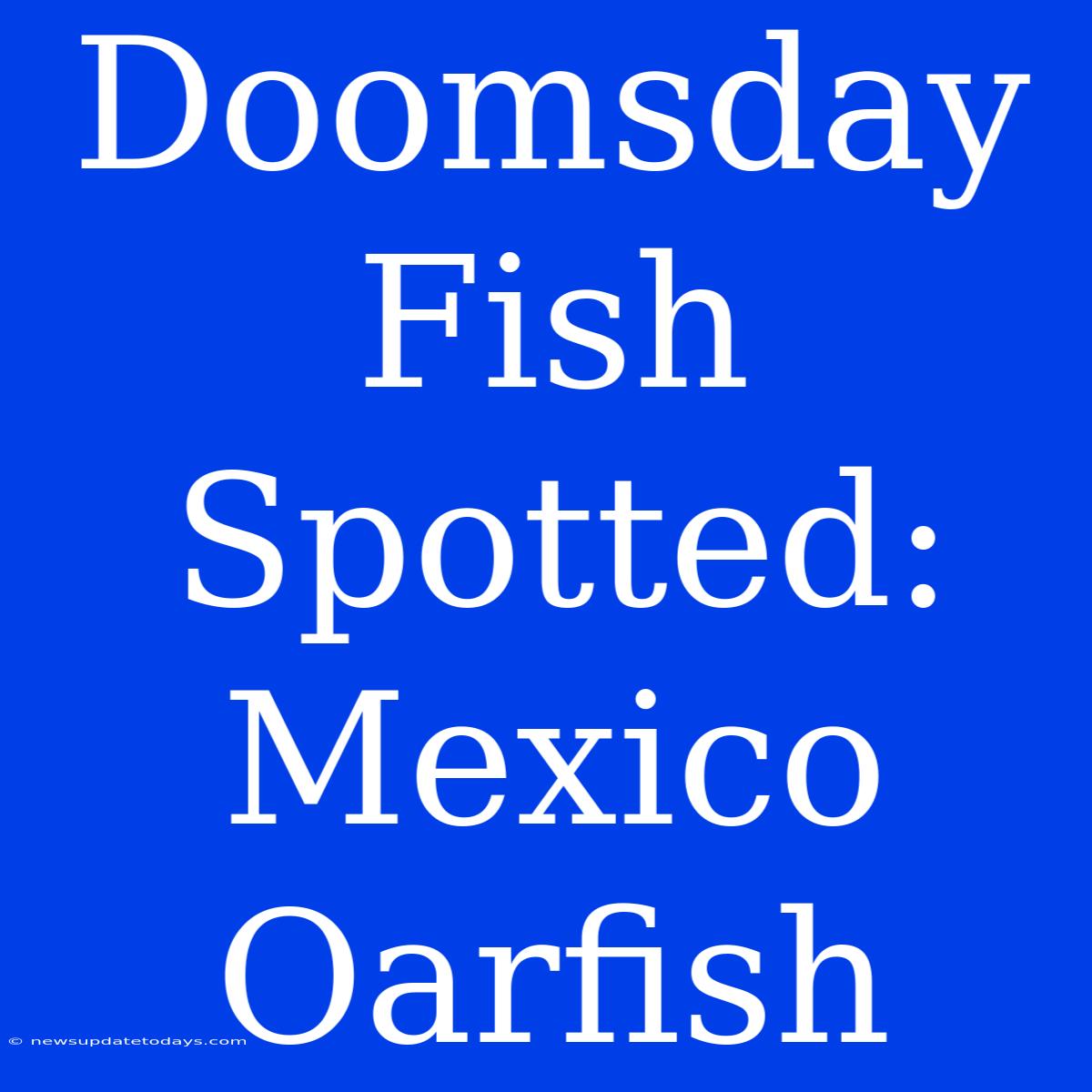Doomsday Fish Spotted: A Giant Oarfish in Mexico Sparks Curiosity
The recent sighting of a giant oarfish off the coast of Mexico has sent ripples of excitement – and perhaps a touch of unease – through the scientific and social media communities. Often dubbed the "doomsday fish" due to its association with earthquakes in Japanese folklore, this rare deep-sea creature's appearance has reignited discussions about its unusual behavior and the potential link to seismic activity.
What is an Oarfish?
The oarfish (Regalecus glesne) is the longest bony fish in the world, reaching lengths of up to 36 feet. They inhabit the deep waters of the ocean, making sightings incredibly rare. Their elongated bodies, silvery coloration, and flowing red fins give them an almost ethereal appearance. This contributes to the many myths and legends surrounding them, particularly in cultures with a strong connection to the sea.
The Mexican Sighting: Fueling the Folklore?
The recent discovery in Mexico, while captivating, doesn't automatically confirm a connection to seismic events. While Japanese folklore links oarfish appearances to impending earthquakes, there's no scientific evidence to directly support this claim. The oarfish's habitat is far from the continental shelf; any surfacing might be due to illness, old age, or changes in ocean currents – factors unrelated to tectonic plate movement.
Why the "Doomsday Fish" Label?
The association stems from the belief that the oarfish, living in the deepest parts of the ocean, are sensitive to subtle shifts in the earth's tectonic plates. These shifts, often preceding earthquakes, could potentially drive them closer to the surface. However, it's crucial to understand that this is merely a correlation, not a proven causation.
Further Research Needed
More research is needed to fully understand the behavior and ecology of the oarfish. Scientists are constantly working to unveil the mysteries of the deep sea, and sightings like this provide valuable opportunities to learn more about these fascinating creatures. While the "doomsday fish" label is catchy, it's vital to rely on scientific evidence rather than folklore when interpreting these events.
The Importance of Ocean Conservation
The sighting of this rare oarfish underscores the importance of ocean conservation. Protecting deep-sea ecosystems is crucial, not only for the survival of these magnificent creatures but also for the overall health of our planet. Understanding the interconnectedness of marine life and geological activity is a key aspect of this conservation effort.
In conclusion: The recent discovery of an oarfish off the coast of Mexico is a remarkable event that highlights the mysteries of the deep sea. While the "doomsday fish" association is intriguing, it's essential to approach such claims with scientific rigor and to remember that further research is critical in understanding the true reasons behind these rare sightings. The focus should remain on the awe-inspiring nature of this creature and the need for ocean preservation.

